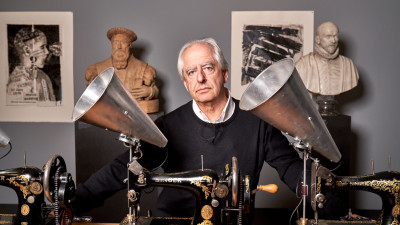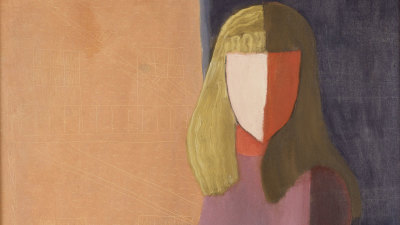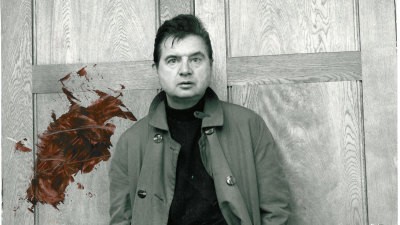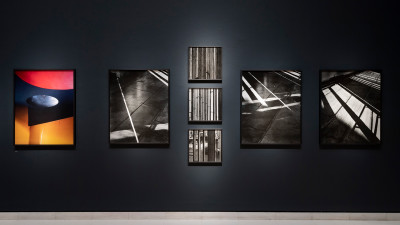Giorgione’s Venice: a beginner’s guide
Giorgione’s Venice: a beginner’s guide
By Tom Jeffreys
Published 29 September 2015
Coming to the RA this spring are iconic works by Giorgione, Dürer, Bellini, Titian and more, in a celebration of Venetian painting in the early 16th century. Here are six key insights into one of the most influential moments in art history.
-
Venice was at the cutting edge
During much of the fifteenth century, it was the artists of Florence who dominated discussion. The flag for the Venetian school – as it came to be known – was flown by Giovanni Bellini. Part of a family dynasty that also included his father Jacopo, brother Gentile and brother-in-law Andrea Mantegna, Bellini first excelled in the use of the traditional tempera method – a fast-drying paint incorporating egg yolk. In the late fifteenth century, however, he began to adopt the new, more flexible medium of oil paint and his later works demonstrate the rich colours and atmosphere that came to characterise Venetian painting.
Pupils learnt from their masters
By 1500, Giovanni Bellini had turned 70 and cemented his place as the great man of Venetian painting. In the first decade of the century, two artists entered the scene who would come to revolutionise painting and place Venice on the map of art history: Titian and Giorgione. Their work spanned portrait and landscape, religious paintings and mythology. It was during this period – from 1500-1510 – that the pair really began to change the way paintings were made. Both men were exceptionally gifted, and soon began to outshine Bellini. Both sought to move away from the symmetries and conventions of Bellini towards a more naturalistic approach, characterised by vivid colours and force of expression.
-

Giorgione, Il Tramonto, c. 1502–5.
Oil on canvas. 73.3 x 91.4 cm. The National Gallery, London, bought 1961, inv. NG 6307. Photo © The National Gallery, London.
-
Giorgione remains a mystery…
At the centre of the RA’s exhibition is the elusive figure of Giorgione. We know that he was born in the town of Castelfranco in around 1477-8 and that he died young in 1510. We know that his work received immediate acclaim. At the age of just 23, for example, he was selected to paint portraits of the Doge Agostino Barbarigo and the condottiere Consalvo Ferrante. But otherwise little is really known about his life. We do know that Giorgione was extremely influential among his contemporaries. Together with Titian, he was the pioneering figure of the Venetian school of Italian Renaissance painting – credited with freeing up the medium from its traditional shackles and giving full expression to mood and feeling.
…and so does his work
Only about half a dozen surviving works have been definitively acknowledged as by Giorgione. Part of the problem is that early works by Giorgione and Titian are often indistinguishable: Titian’s are often described as Giorgionesque. In addition, because Giorgione’s work was so coveted by collectors, following his early death (at just over 30), spurious attributions began to be made. It all means that attributing authorship can be a complicated – and controversial – business.
Venice was becoming the centre of the art world
During this decade, Venice was fast gaining a reputation as the most innovative place for painting. In addition to Bellini, Giorgione and Titian, other important artists were Sebastiano del Piombo, Lorenzo Lotto, and Giovanni Cariani. Artists travelled to Venice from across Europe to learn more about this new approach to painting. Leonardo da Vinci and Albrecht Dürer both visited during the period: Dürer (whose work also features in the exhibition) arrived in 1505 and declared Bellini still the finest artist in the city.
The city’s dominance lasted the rest of the century, and beyond
If Giorgione spearheaded the stylistic innovation of the early 1500s, it was Titian who emerged as the most important painter of sixteenth-century Venice. In his footsteps came the likes of Tintoretto, Paolo Veronese and Jacopo Bassano. One hundred years on, Venice had become the undisputed European capital of the arts. The sixteenth century has been called “the century of Titian” but arguably it was Bellini who did the groundwork, and Giorgione who laid the foundation stones.
-
In the Age of Giorgione is in The Sackler Wing of Burlington House from 12 March to 5 June 2016
Tom Jeffreys (@tomjeffreys) is a writer, editor and curator.




